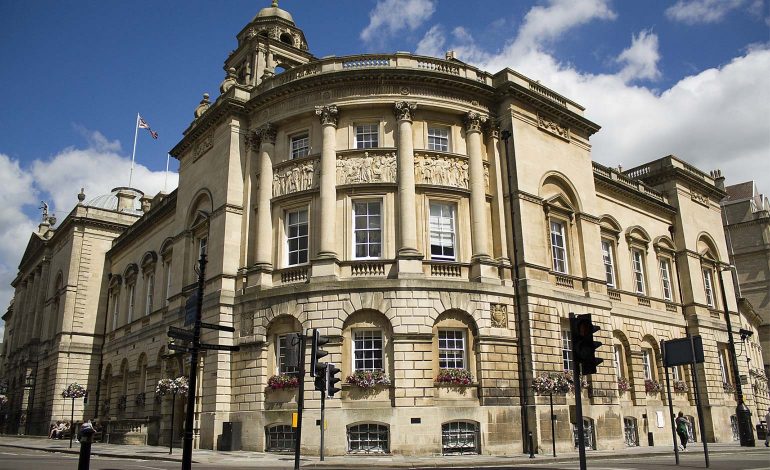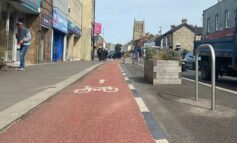The scale of the challenge in reducing carbon emissions across Bath and North East Somerset, in line with the council’s target of carbon neutrality within ten years, has been set out in a detailed report.

The report, to be considered by councillors on 10th October, contains a series of key actions designed to kick-start the area’s journey to carbon neutrality by 2030, including a new district-wide partnership to oversee the transformation.
It identifies the need for a large-scale increase in local renewable energy generation.
This would include solar panels to fill the equivalent of 116 football pitches, through a combination of commercial roofs and ground-mounted arrays.
The report also calls for energy efficiency improvements for the majority of existing buildings, zero carbon for new builds, and a major shift to public transport, walking and cycling.
To move towards meeting the target for the area, the council will use its community leadership role to work with local partners, businesses and communities to support the delivery of three immediate priorities across the whole area.
The priorities are based on research undertaken for the council on the district’s carbon footprint which shows where the principal sources of the area’s carbon emissions come from.
Councillor Sarah Warren, cabinet member for Climate Emergency said: “We have acted quickly on the climate emergency the council declared earlier this year and this report provides us with the information we need to take the next steps required.
“There is a huge amount of detailed work to do but whichever way we look at it we will need to make it possible to significantly reduce the number of miles we travel by private car; we will need to massively invest in our homes to make them more energy efficient; and we will need to decarbonise our electricity supply, with renewable energy such as solar and wind.
“The good news is when we finally achieve this, our journeys to work will be less stressful, our travel will be healthier, our homes will be warmer and cheaper to run and our energy will come from renewable sources.
“I know from talking to local campaigners, both young and old, they want to see rapid action, and to get involved in a practical way.
“I think people are starting to appreciate the transformation facing us, and the sometimes difficult choices and trade-offs ahead. However, I know we can do this.
“Over recent months I’ve been talking to residents across our area. From these conversations, and the work that is already going in our communities, I am certain we can work together.
“Rather than blaming the individual, it is important that we engage communities and tackle these issues systematically.”
Each priority is broken down to illustrate the scale of what would need to change. The figures are not hard targets and will be reviewed each year.
Priority One is for the energy efficiency improvement of existing building stock on a large scale and zero carbon for new build.
This would mean, for example, that the majority of existing homes need to be retrofitted with a range of measures by 2030, such as around 14,700 need solid wall insulation; around 33,000 need triple-glazing, 43,000 need loft insulation and 66,500 need draught-proofing.
Priority Two focuses on transport emission reduction, requiring a major shift to mass transport, walking and cycling.
This would mean, for example, reducing car and van mileage by 25% by 2030 and ensuring the remaining mileage is 76% electric, 14% petrol hybrid EV, leaving only 10% petrol/diesel by 2030.
Priority Three is for local renewable energy generation to be developed rapidly and at scale. This means, for example, an increase from 3.1% of homes having a solar roof to 50% of homes having a solar roof by 2030.
It would also mean, for example, 28 large 2.5MW wind turbines would need to be installed across the area, as well as a range of other renewable energy technologies.
In March 2019 the council resolved to declare a Climate Emergency. The council pledged to provide the leadership to enable Bath & North East Somerset to become carbon neutral by 2030 and to make the council itself carbon neutral by the same date.
Councillor Dine Romero, leader of Bath & North East Somerset Council, added: “As a council we are very proud of what we have achieved as an organisation to tackle climate change, for example our ground-breaking work helped develop one of the UK’s leading community energy enterprises, Bath &West Community Energy.
“The new Keynsham Civic Centre included what was at the time the largest solar PV array in any new UK public sector building.
“Climate emergency demands innovation and this means changing the council’s role. Since forming a new administration we have created a new Climate Emergency Cabinet post and ensured that council decision-making is aligned with the Climate Emergency.
“There is much more we can do to provide leadership and to play our part.”
The council is already targeting key services to enable zero-carbon future planning; it is building the climate emergency into decision-making and wants to ensure that future contracts align with the climate emergency.
The report also says the council will establish a new Bath & North East Somerset Climate Emergency, Environment and Place Partnership, which will play a key role in developing an action plan for the three priorities.
This will bring together partners across the public, business and community sectors to accelerate action across the area and to devise a coordinated approach to influencing government for the changes needed to enable local ambitions to be met.
This new partnership will also lead on engaging our local community to deepen and widen participation across the community.
This will begin with sessions at the Area Forums in November and will include a district-wide conference in 2020, as well as holding citizen juries on key questions for our community.
Councillor Dave Wood, lead member for Neighbourhood Services said: “As we look at the big challenges facing us on energy efficiency, transport and renewables, we will also ensure that practical, individual actions are not forgotten.
“Whether it’s cutting down on food waste, supporting local producers, or refusing single use plastics, we all have the opportunity to make changes and make a difference.
“Increasing the number of trees in our area, to absorb carbon, will also make an important contribution towards tackling the climate emergency.
“We are committed to ensuring that thousands more trees are planted in our area and we will be working with community groups and partners to make this happen. A Tree and Woodland Plan is being developed.”



